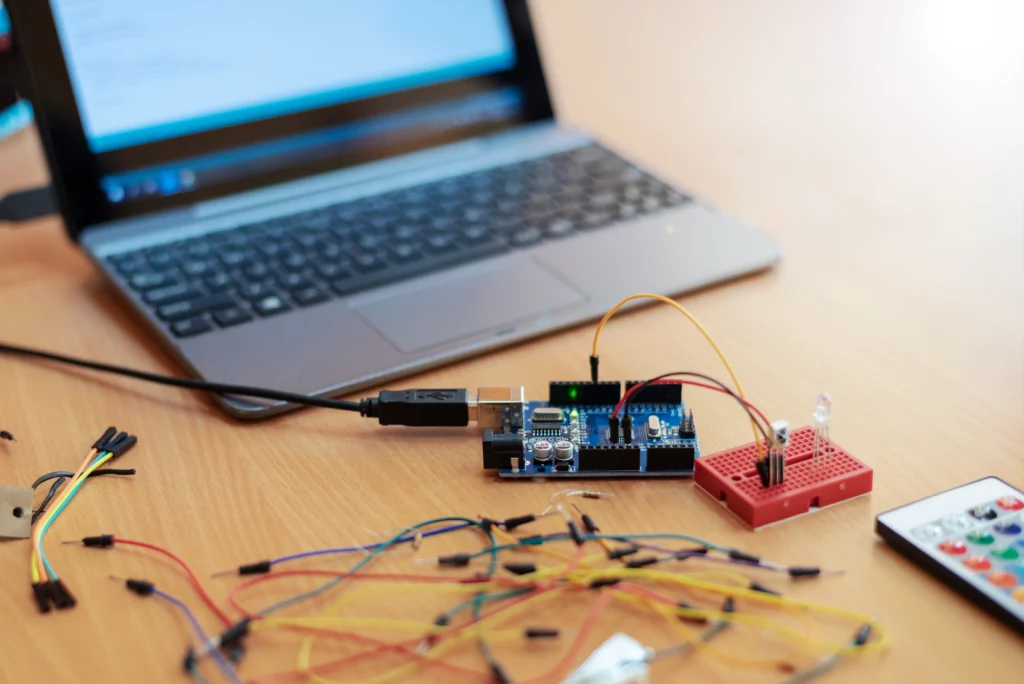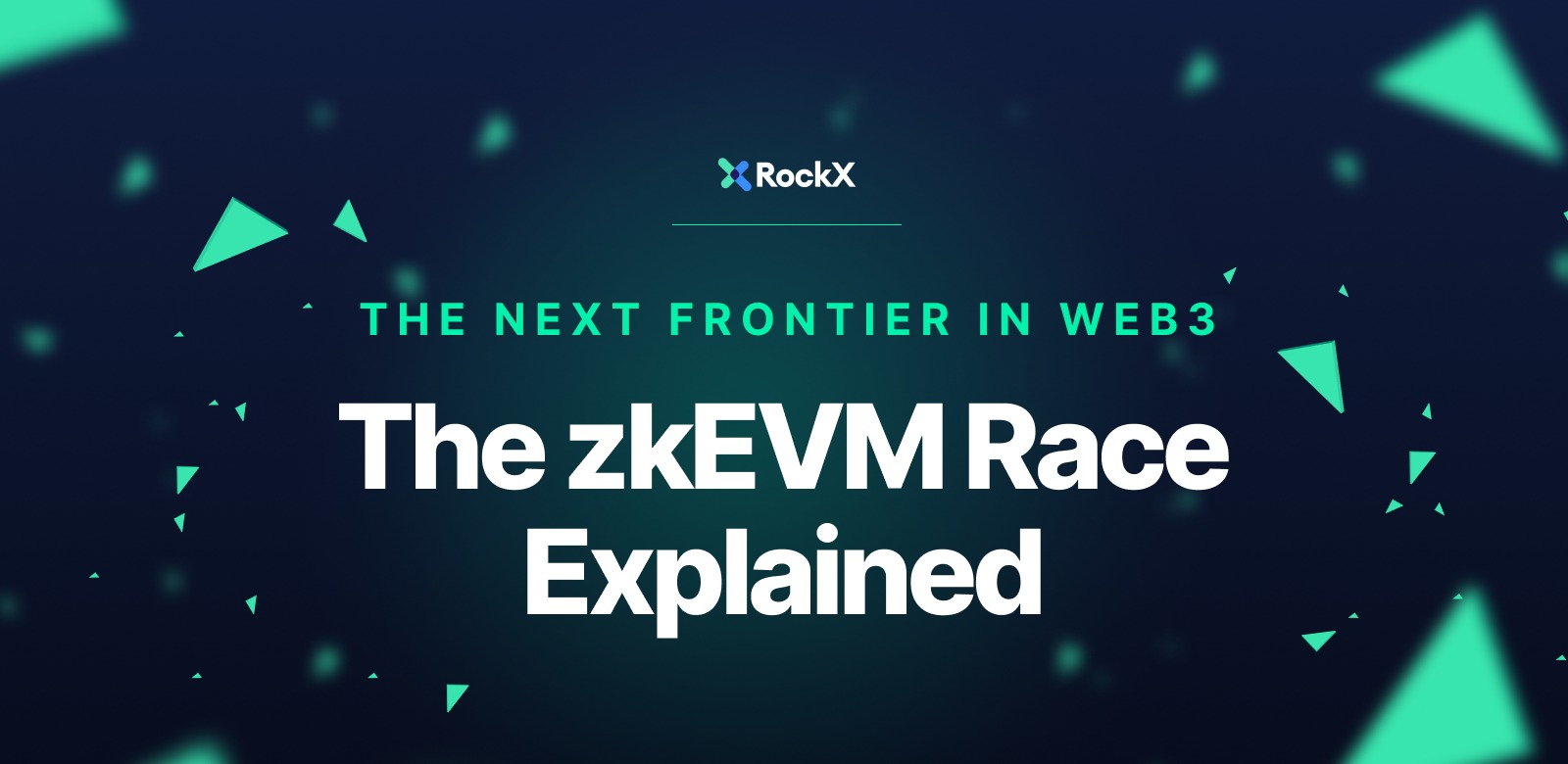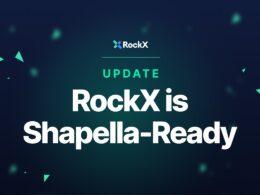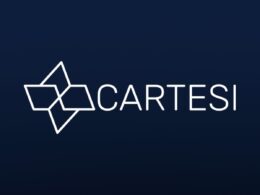Blockchain – driven by its technological competitiveness and innovation potential – continues to gain traction. The 2023 numbers suggest that the Blockchain industry is growing at a CAGR of more than 56% and will continue to do so until 2029 to hit a market size of nearly US$170 billion. More than 85 million bitcoin block explorer, blockchain.com wallet users, existed as of March 2023, and almost 336,000 Bitcoin transactions happened daily – as of March 2023.
Innovation follows growth, and the world of Blockchain is no exception. The more it has advanced, the more has been the growth in innovation and technological advancements.
What is the zkEVM race?

zKEVM implies EVM-compatible zero-knowledge rollups. Rollups are nothing but a bunch of transactions turned into one single data. Roll Ups help take the transactions out of the mainnet and process them off-chain, increasing processing capacity and improving scalability.
The term EVM stands for Ethereum Virtual Machine, a computation engine for Ethereum that helps manage the state of the blockchain and enables Smart Contract functionality.
Finally, ZK or Zero Knowledge proofs provide a way of proving the validity of a statement without revealing it. They represent a cutting-edge advancement in applied cryptography by improving information security standards for individuals.
Altogether, zKEVMS are excellent tools when it comes to scaling Ethereum. Several projects in the blockchain space are now innovating on zKEVMs, and the race is to see which of these projects emerge victorious by successfully implementing this scalability solution at large, driving mass adoption.
What is zkEVM (zero-knowledge Ethereum Virtual Machine)?

We have already seen what the components involved in a zkEVM setup mean on their own. Implemented as a solution, zkEVMs are decentralised layer-2 networks to scale Ethereum. These networks utilise cryptographic zero-knowledge proofs and maintain opcode compatibility with EVM.
zkEVM vs Traditional EVM
The Ethereum Virtual Machine, or the traditional EVM, is a computation engine to deploy and executes Smart Contracts and computes the state of every new block added to the Ethereum blockchain.
Being compatible with traditional EVMs helps application developers to deploy smart contracts on new chains since the code is compatible with the Ethereum network. However, traditional EVMs suffer from many bottlenecks, including high gas fees, making decentralised applications more expensive, especially when there is network congestion.
A zkEVM, on the other hand, is a virtual machine that executes smart contract transactions staying compatible with both zero-knowledge-proof computations and the traditional Ethereum infrastructure. Since these rollups are essentially scaling solutions, they increase transaction throughput and lower costs.
zkEVM Advantages

Scalability Combined With Security
zkEVMs optimise speed, security, and transaction throughput. They optimise for speed and transaction throughput as they do not need to follow Ethereum’s consensus protocol rule. Yet, it does not mean compromising the Ethereum security standards since all transactions on a zkEVM are verified on the underlying layer (layer-1) through validity proofs.
Reduced Cost
Layer-2 rollups are undoubtedly more cost-efficient than layer-1. However, zkEVMs are even better than optimistic rollups. While optimistic rollups post all transaction data on-chain, including signatures, zkEVMs only have to publish the final state changes on-chain. Not only do they reduce gas costs, but they also help maintain security by guaranteeing the validity of all transactions within the batch.
Finality at a Faster Speed
In Blockchain, the term finality has a specific meaning. It denotes the moment when a transaction goes beyond the scope of being altered, cancelled, or reversed. It attains perfect immutability. In optimistic rollups, reaching finality takes anywhere between one and two weeks.
In zk Rollups, finality is achievable as soon as transactions are posted on the underlying layer-1 blockchain.
Essentially, zkEVMs are helpful for traders seeking to move assets quickly around the DeFi ecosystem. Faster movements prove healthy in attracting liquidity and improving capital efficiency.
Existing Ecosystem Benefits
While all the above benefits empower zkEVMs with a robust competitive edge, zkEVMs ably leverage all the existing benefits of Etherum’s development ecosystem. Namely, the benefits include extensive tooling, documentation, code libraries, and resilient infrastructure.
Why is there a race to develop the best zkEVM?

One of the reasons why projects are racing among themselves to develop the best zkEVM is, for sure, to gain the first-mover advantage. But market share is only one part of what meets the eye.
Zk rollups intend to empower Ethereum for mass adoption by turning it into a more scalable, high-throughput, and low transaction cost solution. zkEVMs go one step ahead by combining zk rollups with the benefits of an Ethereum Virtual Machine.
If done successfully, zkEVMs will significantly expand the use cases of zero-knowledge rollups, going beyond sending tokens between addresses and trading non-fungible tokens.
Developing an efficient zkEVM would mean zero-knowledge rollups that support any Ethereum Smart Contract.
Although many optimistic rollups are quicker to market, general-purpose zkEVMs come with multiple security, user experience, and ecosystem benefits. Many expect zkEVMs to become the future primary hub for Ethereum activity, surpassing the Ethereum mainnet.
Scalability and Privacy
The evolution of zkEVMs as a scaling solution pivots on the two crucial aspects of scalability and privacy.
Projects that are racing to go past each other in developing the best possible zkEVM solution are trying to optimise these two.
On the one hand, zero-knowledge encryption enhances security by allowing a system to know that a statement is true without requiring to know anything specific about the statement. On top of that, the presence of this encryption technology in a virtual machine implies that smart contracts run with minimal data, increasing efficiency and scalability.
Major competitors in the race

ZKsync
Positioned as the future-proof zkEVM, zkSync stands on trustlessness, security, resilience, forkability, and community ownership principles. The zkSync Era is a layer-2 protocol whose aim is not only to increase Ethereum’s throughput but also to fully leverage the foundational principles of the Ethereum ecosystem: freedom, self-sovereignty, and decentralisation.
Polygon zkEVM
Polygon zkEVM Beta, another of the leading ZK solutions, aims to offer high performance at a low cost with EVM equivalence and uncompromised security. It uses Polygon Zero technology, claimed to be the fastest ZK proof in the world. It also leverages recursive STARK for extreme scalability and zkSNARK footprint size in L1 for user cost optimisation.
StarkNet
StarkNET, a decentralised validity rollup, operates as a layer-2 network and empowers any application to achieve massive scale without compromising Ethereum’s composability and security. The Ethereum-level composability of StarkNET facilitates easy development, innovation, and creativity. Any business logic is deployable on StarkNET owing to the advantages of Cairo Account Abstraction and other general-purpose features.
zkEVM Scroll
Scroll, the zkEVM-based zkRollup on Ethereum, enables native compatibility for existing Ethereum applications and tools. It comes with all three advantages, scalability, EVM equivalence, and security. Scroll offers higher throughput at lower costs. It also offers Ethereum-like development opportunities.
How the development of the zkEVM will impact the future of blockchain technology

Experts believe that zero-knowledge Ethereum Virtual Machines (zkEVMs) can revolutionise a Smart Contract’s portability properties, making blockchain more ready than ever for mass adoption. The development of zkEVM has allowed all Ethereum projects to easily port existing smart contracts onto a second layer (L2) of zkEVM without having to modify their code in any which way. It will result in greater utility at scale.
zkEVM for enterprise adoption and mainstream usage
Allowing universal portability to all Ethereum projects without any modification to their code makes zkEVM the fittest case for enterprise adoption and large-scale mainstream usage. It makes Ethereum the blockchain of choice for developing all sorts of exciting decentralised projects. Decentralised finance service providers, NFT markets, and Web3 gaming service providers – can all now set up their services for mainstream global adoption with zkEVM.
zkEVM: Key technology in the next phase of blockchain?
Many have started asking the question of whether the advent of zkEVM is indicative of something radically new. To be more precise, industry experts are questioning the very need for other L1 blockchains.
Even if networks come with the same kind of scaling and security solutions as available in zkEVMs, the latter ones will always have the first-mover advantage over others. Moreover, technologically speaking, zkEVMs can revolutionise the way developers utilise Ethereum.
Along with secure scalability, zkEVMs also make Ethereum free of high transaction fees and turn it into a platform more inclusive than before.
Future of blockchain technology and the role of the zkEVM

Overall, coming up with the best possible zkEVM solution will end up strengthening Web3 and the world of decentralised applications and their development. It will make Ethereum fast, more efficient, inclusive, low-cost, and cryptographically secure. All these properties will add to the usability properties of blockchain to a great extent.









